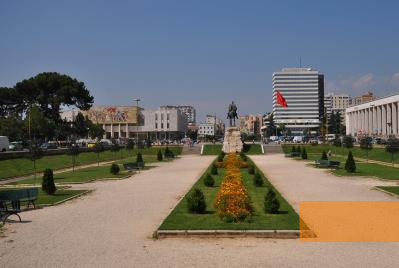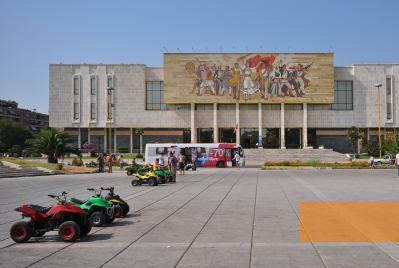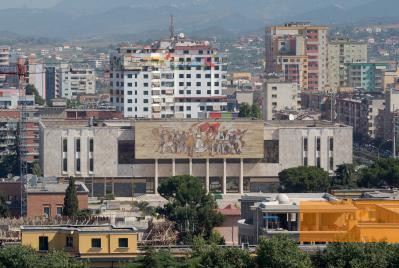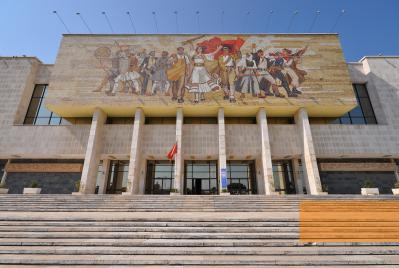The National Historical Museum in the Albanian capital city of Tirana is the country's largest museum. It deals with all of Albanian history, including World War II and the Albanian resistance movement.
On April 7, 1939, the Kingdom of Albania was occupied by Germany's ally Italy, and Albania became a puppet state of Mussolini's control. In 1941, after Yugoslavia was dismembered, Kosovo and parts of Macedonia were incorporated into the Albanian state.
There was resistance against the Italian occupation from the very beginning, and gradually the communists, who closely cooperated with the Yugoslav partisans of Tito, played a leading role in the partisan movement. Following Italy's armistice with the Allies in September 1943, German troops invaded Albania. However, they were not able to gain complete control of the country: the resistance movement grew in strength, despite the »reprisal measures« carried out by the occupying forces - such as in the village of Borova. The partisans finally managed to force the Wehrmacht to retreat in autumn 1944.
There was resistance against the Italian occupation from the very beginning, and gradually the communists, who closely cooperated with the Yugoslav partisans of Tito, played a leading role in the partisan movement. Following Italy's armistice with the Allies in September 1943, German troops invaded Albania. However, they were not able to gain complete control of the country: the resistance movement grew in strength, despite the »reprisal measures« carried out by the occupying forces - such as in the village of Borova. The partisans finally managed to force the Wehrmacht to retreat in autumn 1944.
The exhibition honours, amongst others, the victims of the Albanian resistance movement against the Italian and German occupation as well as the victims of the communist regime after 1945.
The National Historical Museum, opened on October 28, 1981, is the largest museum in Albania. It is located in the city centre of the capital Tirana, close to the Palace of Culture. The historic town hall was torn down in order to make space for the new construction. Today, the museum is one of the most important landmarks of the city. Until 1991, a statue of the long-standing dictator Enver Hoxha (1908-1985) stood in close vicinity - it was taken down following the collapse of the communist regime. On the façade of the building is a large mosaic entitled »Shqiptarët« (English: the Albanians). One of the centrepieces of the mosaic used to be a red star, but it was removed in the 1990s. The museum presents the history of Albania beginning in the stone age. The exhibition concentrates on Skanderbeg, the Albanian national hero who lived in the 15th Century. A separate room is dedicated to the Albanian resistance movement against the Italian and German occupation regimes during World War II.
- Name
- Muzeu Historik Kombëtar
- Address
-
Sheshi »Skënderbej«
1001 Tiranë - Phone
- +355 422 239 77
- Fax
- +355 422 283 89
- Web
- http://www.mhk.gov.al/
- dorian.koci@mhk.gov.al
- Open
- Tuesday to Saturday 10 a.m. to 5 p.m., Sunday 9 a.m. to 2 p.m.
- Possibilities
- Permanent exhibition (there is an English translation for some of the content), museum shop





